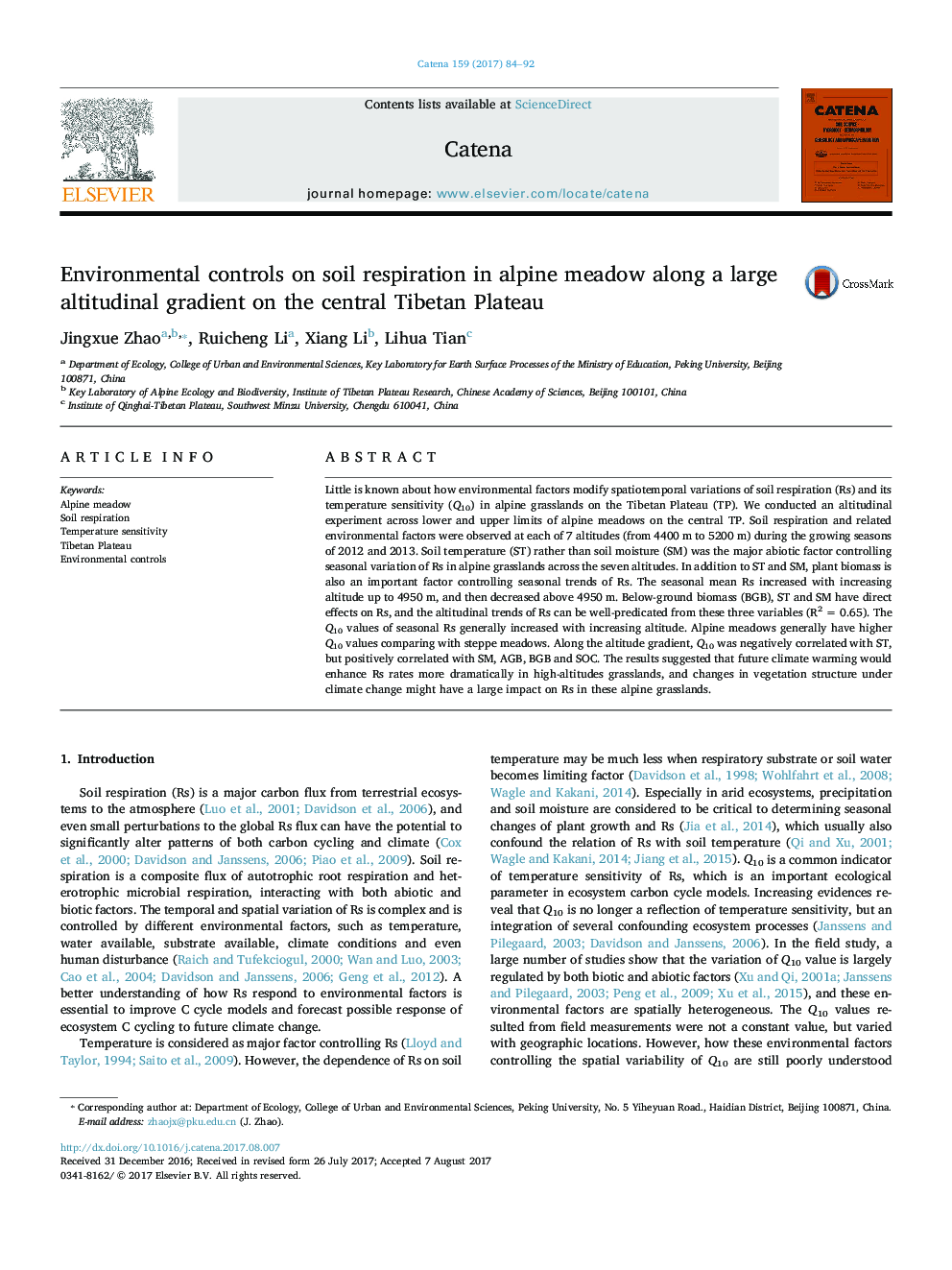| Article ID | Journal | Published Year | Pages | File Type |
|---|---|---|---|---|
| 5770068 | CATENA | 2017 | 9 Pages |
Abstract
Little is known about how environmental factors modify spatiotemporal variations of soil respiration (Rs) and its temperature sensitivity (Q10) in alpine grasslands on the Tibetan Plateau (TP). We conducted an altitudinal experiment across lower and upper limits of alpine meadows on the central TP. Soil respiration and related environmental factors were observed at each of 7 altitudes (from 4400Â m to 5200Â m) during the growing seasons of 2012 and 2013. Soil temperature (ST) rather than soil moisture (SM) was the major abiotic factor controlling seasonal variation of Rs in alpine grasslands across the seven altitudes. In addition to ST and SM, plant biomass is also an important factor controlling seasonal trends of Rs. The seasonal mean Rs increased with increasing altitude up to 4950Â m, and then decreased above 4950Â m. Below-ground biomass (BGB), ST and SM have direct effects on Rs, and the altitudinal trends of Rs can be well-predicated from these three variables (R2Â =Â 0.65). The Q10 values of seasonal Rs generally increased with increasing altitude. Alpine meadows generally have higher Q10 values comparing with steppe meadows. Along the altitude gradient, Q10 was negatively correlated with ST, but positively correlated with SM, AGB, BGB and SOC. The results suggested that future climate warming would enhance Rs rates more dramatically in high-altitudes grasslands, and changes in vegetation structure under climate change might have a large impact on Rs in these alpine grasslands.
Related Topics
Physical Sciences and Engineering
Earth and Planetary Sciences
Earth-Surface Processes
Authors
Jingxue Zhao, Ruicheng Li, Xiang Li, Lihua Tian,
